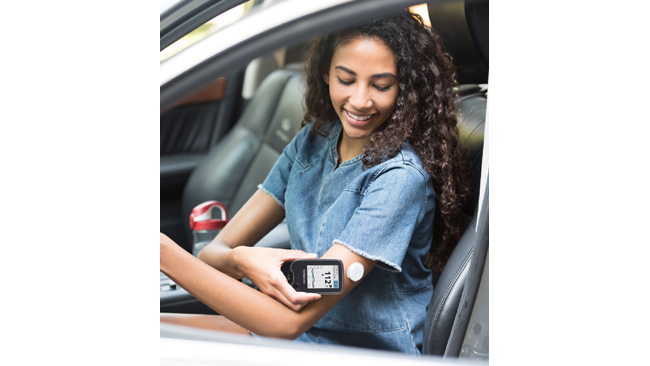
Jaipur, June 13, 2022.
Diabetes is a common chronic condition that requires regular monitoring. Absence of monitoring could lead to delay in treatment and diabetes-related complications. Today, there are new therapies and revolutionary wearable technologies that continuously monitor one’s glucose levels in real time. According to the American Diabetes Association (ADA), continuous glucose monitoring (CGM) helps people beyond intensive insulin users. This translates to a broader use of the technology to benefit those living with diabetes, no matter where they are in the spectrum of care. The ADA further states that people with Type 1 and Type 2 diabetes must aim for a Time in Range (TIR) of at least 70% of readings.
Controlling blood glucose levels effectively with tech advancements
With tech advancements today, there are effective monitoring solutions that are proven to reduce HBA1C levels. According to a 2019 study undertaken by American Diabetes Association (ADA), for adults with type 2 diabetes on intensive insulin, HbA1c dropped from 8.9% to 8% with at least three months of using a continuous glucose monitoring system, in this case FreeStyle Libre1.
Prof. Dr. Debmalya Sanyal, Professor, Dept. of Endocrinology, KPC Medical College, Kolkata, said, “Research indicates that continuous glucose monitoring has helped people with Type 2 diabetes either on long-acting insulin therapy or non-insulin OAD therapy, significantly reducing their HbA1c levels. CGM when added to insulin therapy treatment regimens helps in getting detailed information about glucose level fluctuations and enables titration of insulin dose easily. With the use of the CGM device, patients on polypills who had poor glucose control reported a significant reduction in acute diabetes events or complications that can arise from diabetes. This resulted in reducing all-cause hospitalizations in these patients.”
Dr. Unnikrishnan AG, Endocrinologist and CEO, Chellaram Hospital Diabetes Care and Multispeciality, Pune said, “Patients with diabetes who are on insulin therapy or on certain oral anti-diabetes medications are at risk of very low as well as very high blood glucose levels. Since high blood glucose levels do not usually produce any symptoms, but continuous damage to the body, monitoring remains a critical component of diabetes management.”
Seamlessly moving towards diabetes management
Lifestyle factors such as diet, exercise patterns, sleep and most importantly medicines affect blood sugar levels. For people with diabetes, treatment usually starts with a single tablet. Over the years, in the pursuit of perfect HbA1c levels, the number of Oral Anti Diabetic medications (OADs) may increase.
For certain patients, the transition from OADs to insulin injections is necessary due to increased glucose levels despite medicines. While patients may be apprehensive about insulin and may wish to delay initiation as much as possible, insulin therapy regimens are added to keep blood glucose levels under control, especially after meals. Additionally, despite the polypill therapy, which is a fixed-dose combination of medications, at times patients are unable to meet their objective, i.e., optimal glucose co-ordination.
Role of Time in Range (TIR) to manage blood glucose levels
TIR plays an important role in the control of diabetes, optimization of OADs in patients on polypill and is an important tool for hospitalized surgical and non-surgical patients. Additionally, it accurately maps the extent of glycemic control and can direct treatment interventions in real-time, which is beneficial for those with Type 1 and Type 2 diabetes along with pregnant women, young adults, paediatric patients and older people with comorbidities. It is recommended that one must aim for roughly 17 out of 24 hours each day to be in range. In simple terms, more the TIR, better is the glucose control in diabetes.
Increase in self-awareness levels amongst people with diabetes
Technology and breakthrough innovations like CGM devices are making people’s lives simpler and helping them live better. They allow users to share glucose data automatically with their doctor in real time which helps both patients and doctors to make increasingly informed decisions.These modern prick-less, hassle-free devices could be game-changing for people beyond intensive insulin users, translating to broader use of the technology to benefit all those living with diabetes.